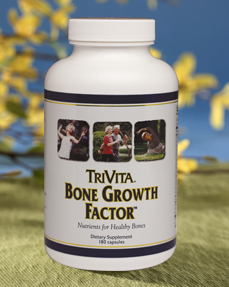 First, a look at just what osteoporosis is, and who it strikes. This “silent disease” has no outward symptoms: it gradually steals mass and strength from bones, leaving them porous and weakened. Its main targets? The hip, spine and wrist.The damage leaves victims vulnerable to falls and fractures, and that can lead to even more scary situations – including death. While “the bone thief” can attack people of any age and either gender,women and mature adults are most likely to be affected. Osteoporosis is not an inevitable part of aging, and it is a big deal.
First, a look at just what osteoporosis is, and who it strikes. This “silent disease” has no outward symptoms: it gradually steals mass and strength from bones, leaving them porous and weakened. Its main targets? The hip, spine and wrist.The damage leaves victims vulnerable to falls and fractures, and that can lead to even more scary situations – including death. While “the bone thief” can attack people of any age and either gender,women and mature adults are most likely to be affected. Osteoporosis is not an inevitable part of aging, and it is a big deal.
One of the latest in a long line of studies about osteoporosis indicates that in people over age 60, any bone fracture dramatically boosts the risk of dying.
The Australian study, published in the Journal of the American Medical Association, looked at more than 4,000 people over a period of almost 20 years, and found these dramatic results: * After even a minor bone break like a wrist fracture, the risk of death zoomed by 42% in women and 33% in men. * After a hip fracture, women were twice as likely to die than before, and men, three times as likely to die. * These jumps in death risk lingered for years: 5 years for all fractures, and up to 10 years after a hip fracture.
What brings on bone loss? Time steals bone from us all. Around age 30, bone (which is living tissue made of collagen protein and calcium phosphate, a mineral) reaches a peak of density and strength. After that, bone starts being lost at a faster rate than it’s created; the process really speeds up after menopause, and continues into postmenopause due to decreased levels of the hormone estrogen. People most at risk are small, thin-boned Caucasian and Asian women with a family history of osteoporosis, and their risk increases with age.
The bone-breaking risk goes up in general for people who smoke, don’t exercise, drink alcohol, take certain medications and don’t get enough calcium and Vitamin D.
Detection & Prevention.
Sadly, the first clue some people get about osteoporosis stealing their bones is a sudden fall that fractures a hip or makes a spinal vertebra collapse. At this stage, or before, during a wellness exam, a healthcare professional may order a bone mineral density (BMD) test. This painless test can detect the current stage of bone loss, or identify bone issues before they become a problem (“osteopenia” or low bone density can be a sign of osteoporosis to come). There are medications for osteoporosis, and several other everyday ways that everyone can help protect their precious bones.
Healthcare professionals recommend three main strategies to turn away the bone thief and help stay strong:
1. crank up the calcium. This mineral is vital to bones; if you don’t get enough over your lifetime, you’re leaving yourself wide open to bone theft. Since many people consume less than half the recommended amount of calcium, it’s important to take up the slack: eat foods like low-fat dairy products, dark green, leafy vegetables and calciumfortifi ed foods. Taking quality calcium supplements is also suggested for many people. This is especially important as we age, because our bodies become less able to absorb calcium effi ciently.
2. Dose up on “D.” Vitamin D is a key player in helping absorb calcium and maintaining bone health. We get it via sunlight and foods like egg yolks and liver. D supplements are smart for many, especially older people and anyone during winter months who tends to stay indoors.
3. Bone up on exercise. Any activity that has you working against gravity is working for your bone health; it’s called weight-bearing exercise. You don’t have to lift weights or run marathons: just walk, hike, jog, climb stairs, play tennis or dance. Bonus: Since exercise helps improve your muscle tone and strength, coordination and balance, it boosts your overall health. And, with stronger muscles and better balance, you’ll help avoid the falls that can lead to fractures.
Since falling down can fracture bones, avoiding falls is especially important for anyone with weak or brittle bones. This is why exercise is so helpful to stay balanced and coordinated. In addition, these tips can help you stay upright and safe: * If needed, use a cane or walker for added stability. * Wear traction-soled shoes. * When sidewalks are slippery, walk on grass. * Tread carefully on polished fl oors that can be dangerously slick when wet. * Indoors, avoid walking in socks or slick-soled slippers. * Don’t use scatter rugs. All carpets and area rugs should either have skid-proof backing or be secured to the floor. * If possible, have handrails on both sides of stairways.
Help avoid fractures from weakened bones with TriVita’s Bone Growth Factor:
http://www.trivita.com/13170419
No comments:
Post a Comment